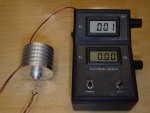jayrob
0
- Joined
- Sep 21, 2007
- Messages
- 9,862
- Points
- 113
Must have been a lot of work Igor. :gj:
I am surprised at the differences in output power from highest to lowest. I guess I was just hoping for more consistency with the 8X's. But it does look like most are pretty closely bunched, and that there are only a couple of higher efficiency ones, and a couple of lower efficiency ones...
With those kind of power readings, the graphs must have been done using my 405-G-1 glass lens correct?
I am surprised at the differences in output power from highest to lowest. I guess I was just hoping for more consistency with the 8X's. But it does look like most are pretty closely bunched, and that there are only a couple of higher efficiency ones, and a couple of lower efficiency ones...
With those kind of power readings, the graphs must have been done using my 405-G-1 glass lens correct?
Last edited:






